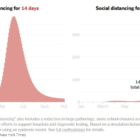Data Journalism
Data Journalism Top 10: The Taliban’s March, Border Walls Quadruple, Kenyan Corruption, White Men Like the Office
|
Two decades after US-led troops invaded Afghanistan to topple the Taliban regime, the organization has retaken control of the country. Our NodeXL mapping from August 9 to 15, found an animated map by the Financial Times showing how the Taliban captured various districts across the country before surging into the capital Kabul earlier this week. In this edition, we also feature an investigation into America’s diabetes crisis by Reuters, a look into Lionel Messi’s legacy at Barcelona by The Economist, and a piece on the history of data journalism by the Guardian.









